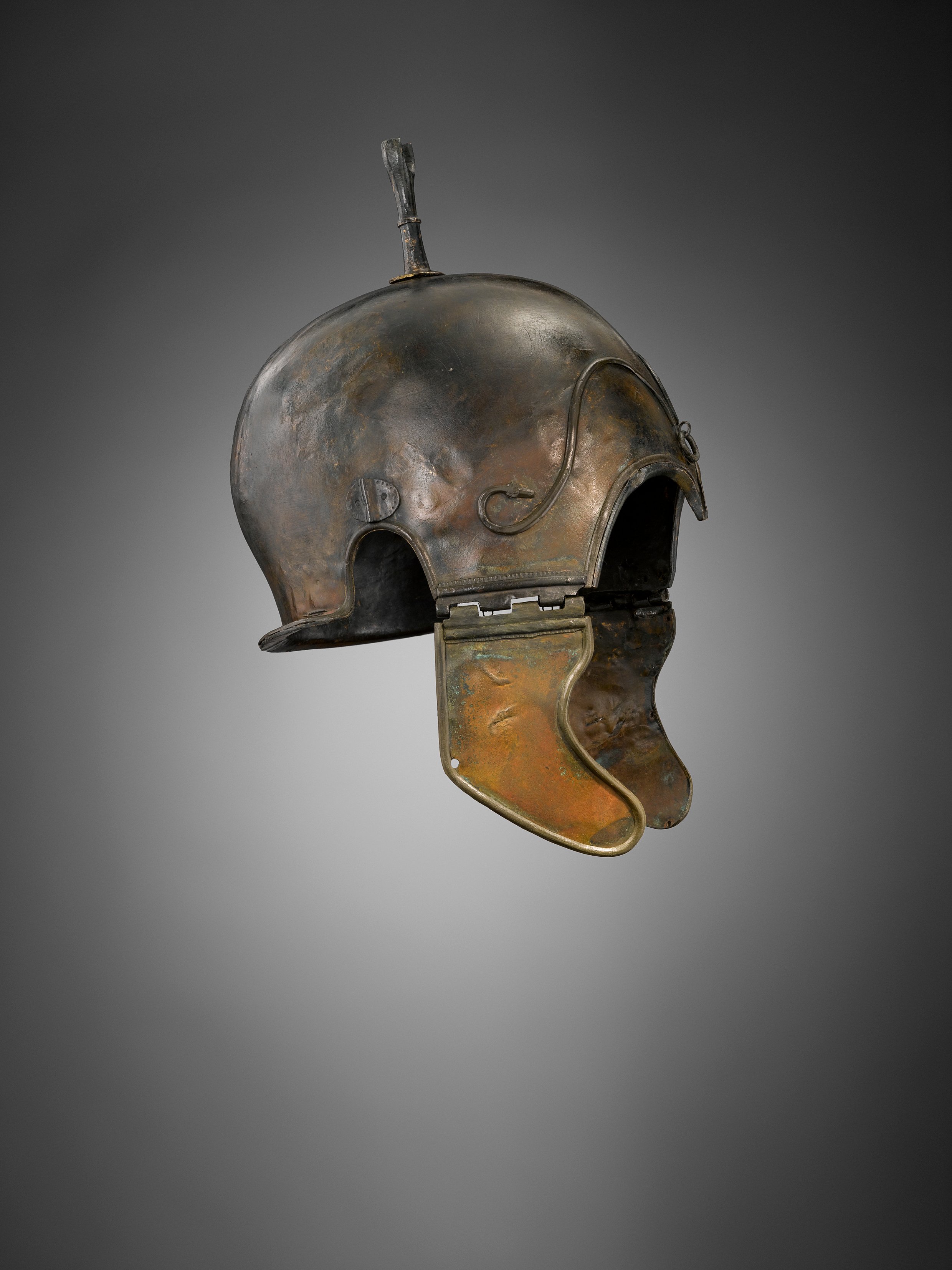
Seven ancient bronze Celtic warrior helmets have been returned to their native Spain after it was revealed that the artifacts were pilfered goods, in what the country is calling the most “significant return of stolen heritage since 2012.”
The restitution came after British collector Christian Levett, who acquired the helmets legally, discovered that two people had been convicted last year of plucking the armor from an archaeological site in Spain during the 1980s. He learned of the looting via Spanish media, he tells Artnet News. In response, Levett worked with Spain’s ambassador to UNESCO, signing an act of voluntary surrender of the ancient objects, which date between 400 and 200 BC.
Levett, who is also the founder of the Mougins Museum of Classical Art (MACM) in Southern France, procured the helmets between 2007 and 2009 from Munich and London, respectively, for an estimated total of £250,000 ($329,362). Until recently, they had been on view at MACM, which holds over 800 of Levett’s holdings, spanning from antiquity to contemporary art.
Levett has begun to focus on collecting contemporary pieces, citing the muddy provenances of older and ancient works as part of the reason. He told the Financial Times last year that since building the majority of his classical collection, he learned that “the supply of works with impeccable provenance has shrunk rapidly.”
One of the repatriated bronze helmets. Courtesy Musée d’Art Classique de Mougins.
“In my personal opinion, when it’s clear beyond doubt, as in this case, that an object has been illegally looted and illegally exported from a particular source country, then I personally cannot see why anyone would want to retain that piece in their collection, at the very least not ethically speaking, and probably even legally. With that in mind, the first thing to do I believe is to return it and that at least solves the first problem, and the initial cultural crime at least is cured,” Levett said in conversation with Artnet News.
“The second problem is who sold it to you, and assuming they held themselves out to be experts in the field, which presumably they did if you bought it from a recognized professional and public source, like a relevant registered dealer or auction house in the field, then surely the onus is on them to pay you back. Then it’s their problem to go after their source and sooner or later the perpetrators of the crime at the end of the supply chain who sold the piece into the consumer market should be found too, At least if it was looted relatively recently,” he concluded.
The last high-profile case of heritage repatriation to Spain occurred in 2012, when $500 million in coins swiped from the battleship Señora de las Mercedes, which sunk in 1804, was ordered returned by US courts.